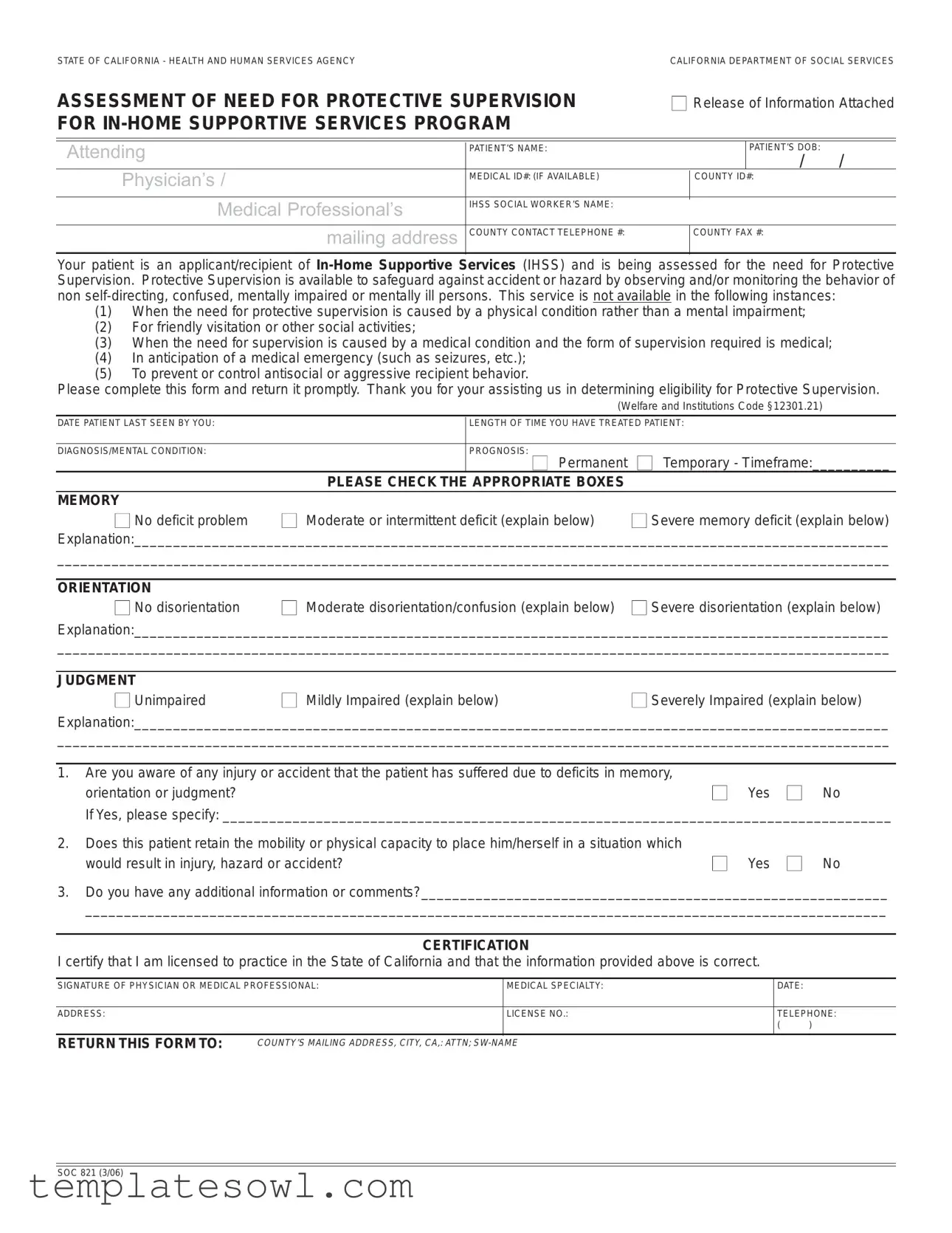1. What is the purpose of the SOC 821 form?
The SOC 821 form is used in California's In-Home Supportive Services (IHSS) program to assess the need for Protective Supervision for applicants and recipients. This service helps safeguard individuals who are non self-directing, confused, mentally impaired, or mentally ill by observing or monitoring their behavior.
2. Who is qualified to complete the SOC 821 form?
A licensed physician or medical professional must complete the SOC 821 form. This ensures that the information provided is accurate and credible for determining the patient’s eligibility for Protective Supervision.
3. What types of situations does Protective Supervision cover?
Protective Supervision is intended for individuals whose need arises from mental impairments, confusion, or related conditions. It does not cover cases where supervision is needed due to physical conditions, for social visits, or in anticipation of medical emergencies.
4. What information is required on the SOC 821 form?
The form requires details such as the patient’s name, date of birth, medical ID, diagnosis, prognosis, and assessments of memory, orientation, and judgment. The physician must also provide their signature and details of their medical specialty.
5. How does one determine if a patient qualifies for Protective Supervision?
To qualify for Protective Supervision, the physician must evaluate the patient's mental condition and the level of deficit in memory, orientation, and judgment. Documented injuries or accidents related to these deficits support the need for supervision.
6. Is there a specific time frame for the need for Protective Supervision?
Yes, the prognosis can be classified as either permanent or temporary. If temporary, the physician should indicate the expected timeframe for the patient's need for supervision.
7. What should be done if the physician has additional comments?
The physician should use the designated section on the SOC 821 form to provide any additional comments or relevant information that may assist in the assessment process.
8. How should the completed SOC 821 form be submitted?
The completed form must be returned promptly to the appropriate county mailing address listed at the bottom of the SOC 821 form. It should be addressed to the designated social worker.
9. What if the patient does not have a medical ID number?
If the patient does not have a medical ID number, the physician can leave that section blank. However, providing any other identifying information available is encouraged to assist with the processing of the application.
10. Can the SOC 821 form be used for patients who exhibit aggressive behavior?
No, the SOC 821 form does not apply to those whose need for supervision is primarily to control aggressive or antisocial behavior. Protective Supervision is meant to address deficits in mental capacity that lead to potential accidents or hazards.

